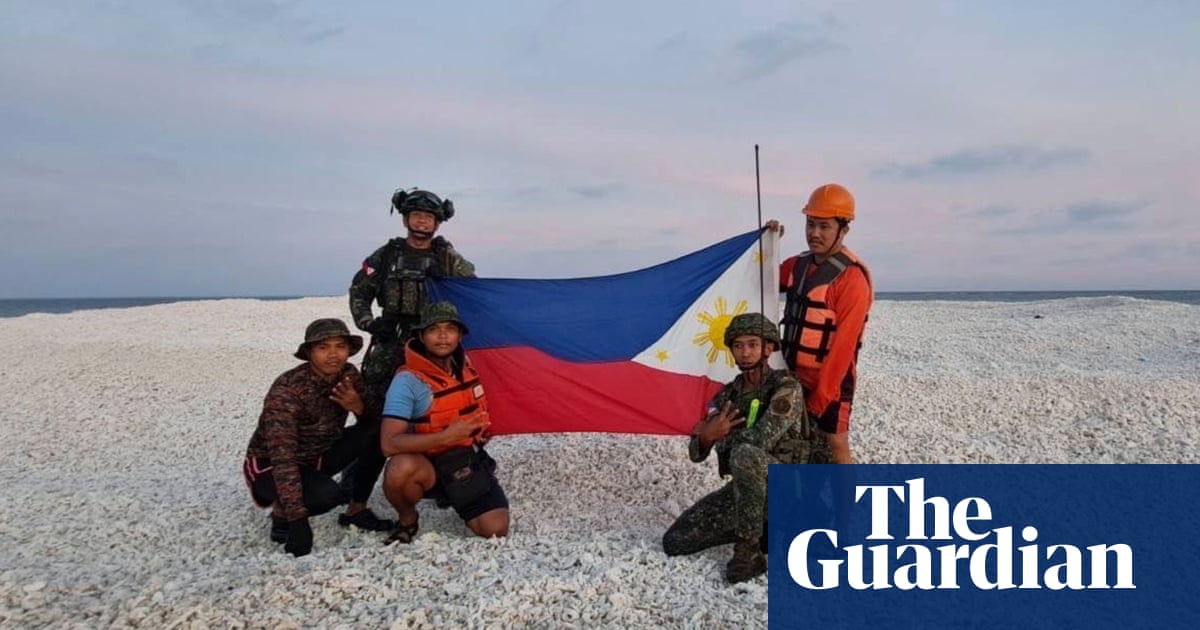Philippines, China Clash Over South China Sea Sandbank: Tensions Flare Again
The South China Sea remains a flashpoint of geopolitical tension, with a recent incident involving the Philippines and China reigniting concerns over maritime disputes in the strategically vital region. A standoff near a sandbank claimed by both nations has escalated the already delicate situation, prompting strong reactions from Manila and raising questions about the future stability of the area.
A Standoff at the Sandbank
The incident, which unfolded [Insert Date of Incident], involved [Specify the type of vessel involved, e.g., Philippine Coast Guard ships] encountering [Specify the type of Chinese vessels involved, e.g., Chinese maritime militia vessels] near [Name of Sandbank]. [Provide a concise description of what happened, including any alleged actions by either side, citing credible news sources]. The Philippines alleges [State the Philippine's claims regarding the incident, citing official statements], while China maintains [State China's counter-claims, citing official statements or news reports].
This latest confrontation underscores the ongoing disagreement over the ownership of the sandbank, which is located within the Philippines' Exclusive Economic Zone (EEZ) as defined by the United Nations Convention on the Law of the Sea (UNCLOS). The Philippines considers this a blatant violation of its sovereign rights.
Heightened Tensions and International Response
The incident has prompted a strong response from the Philippines, with [mention specific actions taken by the Philippine government, including diplomatic protests or statements by officials]. The Philippines has consistently relied on the 2016 arbitral ruling that invalidated China's expansive claims in the South China Sea. This ruling, however, has been largely ignored by China.
The international community is watching the situation closely. [Mention the reactions of other countries or international organizations, such as the US, ASEAN, or the UN]. [Insert details of any statements or actions taken by these entities]. The potential for escalation remains a significant concern, particularly given the presence of significant naval assets from both countries in the region.
The Stakes: Beyond Territorial Disputes
The conflict over this sandbank is more than just a territorial dispute. The South China Sea is a crucial waterway for global trade, rich in fisheries, and believed to hold substantial oil and gas reserves. Control over these resources and strategic shipping lanes is a major driver of the ongoing tensions.
- Economic Implications: Disruptions to shipping routes due to escalating tensions could have severe economic consequences for the region and the global economy.
- Environmental Concerns: The increased maritime activity in the area raises environmental concerns, including the potential for pollution and damage to fragile marine ecosystems.
- Regional Stability: The ongoing disputes undermine regional stability and could lead to further escalations, potentially involving other regional powers.
Looking Ahead: De-escalation or Further Conflict?
The future trajectory of the situation remains uncertain. [Analyze the potential for de-escalation, highlighting any diplomatic efforts or potential solutions]. [Discuss the possibility of further conflict and its potential consequences]. The international community has a vital role to play in fostering dialogue and preventing further escalation. The need for a peaceful resolution based on international law remains paramount.
Keywords: South China Sea, Philippines, China, maritime dispute, sandbank, UNCLOS, EEZ, geopolitical tension, international relations, arbitration ruling, regional stability, economic implications, environmental concerns.
Call to Action: Stay informed about developments in the South China Sea by following reputable news sources and engaging in thoughtful discussions about the region's future. Understanding the complexities of this situation is critical for promoting peace and stability in the region.

